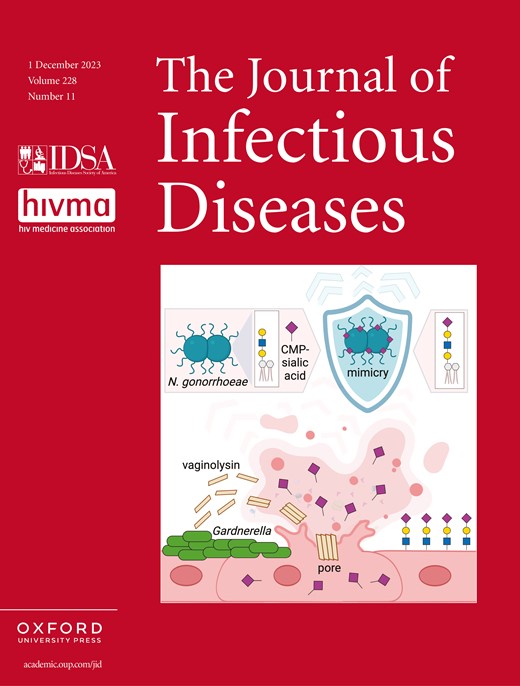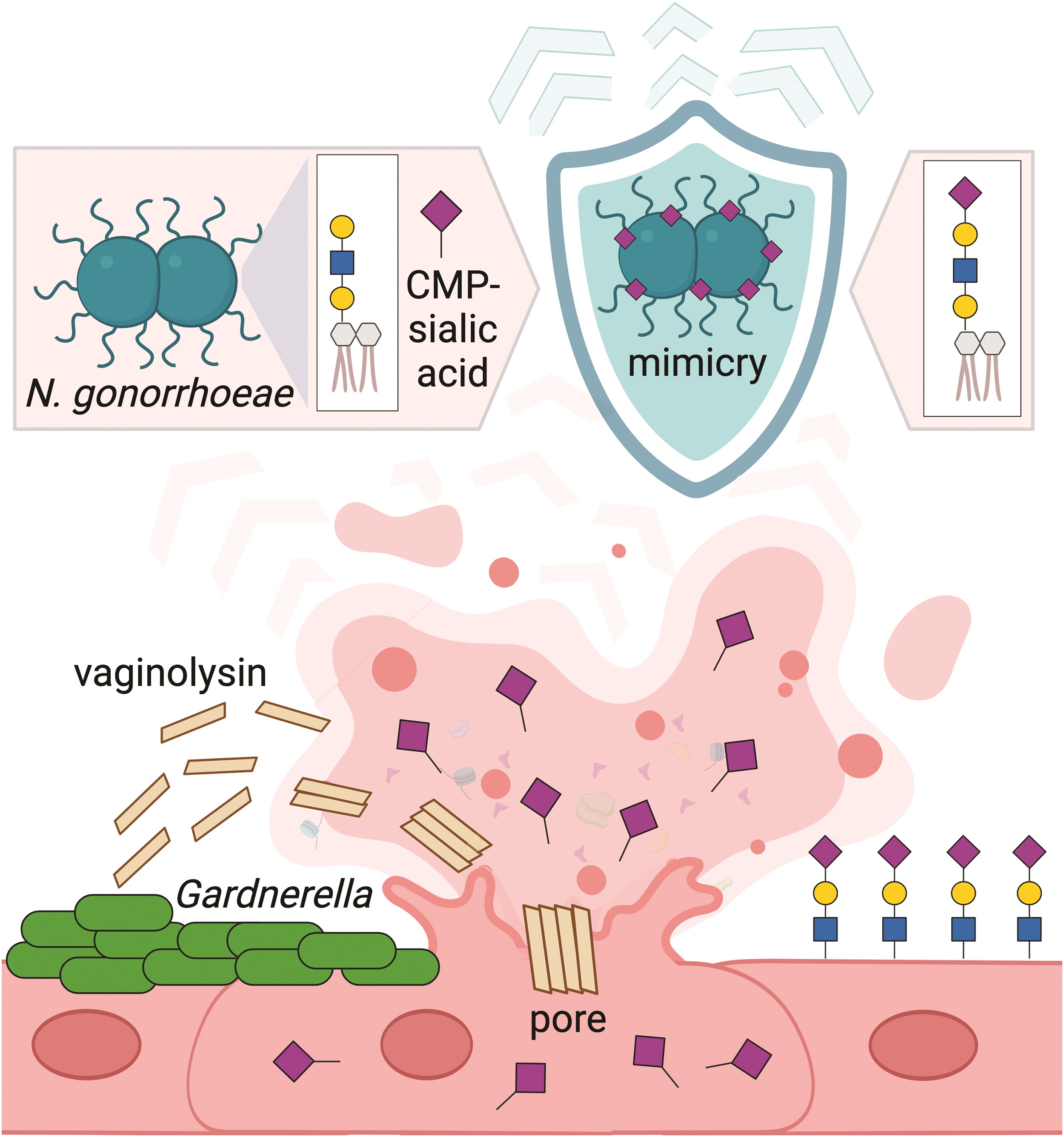
Cover image

Volume 228, Issue 11, 1 December 2023
Editorial
Digital Crowdsourcing and Infectious Diseases: Opportunities and Obstacles
Major Articles and Brief Reports
Viral Disease Pathogenesis
Enhancing Community Participation in Dengue Control Through Digital Crowdsourcing: An Analysis of a World Mosquito Program Digital Open Call in Sri Lanka
Community participation is important for dengue research. We organized a crowdsourcing open call to solicit strategies for community-led mosquito release, receiving many high-quality submissions. Our data suggest the feasibility of using crowdsourcing for dengue community engagement in resource-limited settings.
Incidence of Cytomegalovirus Primary and Secondary Infection in Adolescent Girls: Results From a Prospective Study
We found annual cytomegalovirus reinfection/reactivation rates of 2%–8% and primary infection rates of 5% in adolescent girls in Finland, Mexico, and the United States. Our study highlights the need for standardized markers for reinfection/reactivation.
Impact of Human Papillomavirus Vaccine Against Anal Human Papillomavirus Infection, Anal Intraepithelial Neoplasia, and Recurrence of Anal Intraepithelial Neoplasia: A Systematic Review and Meta-analysis
Evidence from 14 studies indicates strong human papillomavirus (HPV) vaccine efficacy/effectiveness (VE) against anal HPV infection and anal intraepithelial neoplasia in human immunodeficiency virus–negative individuals vaccinated at age ≤26 years but lower VE in populations less naive to anal HPV.
A Herpes Simplex Virus 1 DNA Polymerase Multidrug Resistance Mutation Identified in a Patient With Immunodeficiency and Confirmed by Gene Editing
Long-term follow-up of a patient with immunodeficiency was conducted before and after stem cell transplantation, and it revealed herpes simplex virus 1 evolution and frequent reactivation of wild-type and mutant virus strains. The multidrug resistance phenotype of the novel Q727R DNA polymerase mutation was confirmed by gene editing.
Pediatric Respiratory Syncytial Virus Diagnostic Testing Performance: A Systematic Review and Meta-analysis
We investigated whether adding other specimen types to nasopharyngeal/nasal aspirate or swab RT-PCR increased RSV detection in children, as found in adults. RT-PCR was the most sensitive diagnostic test and adding additional specimen types modestly increased RSV detection.
Burden of Respiratory Syncytial Virus in the European Union: estimation of RSV-associated hospitalizations in children under 5 years
The study estimated that an average of 245 244 children aged under 5 years are hospitalized annually due to RSV in the EU, with the highest hospitalization rates in children aged less than 2 months (71.6 per 1000 children).
Estimation of the Number of Respiratory Syncytial Virus–Associated Hospitalizations in Adults in the European Union
Respiratory syncytial virus causes a high annual number of hospital admissions in adults across the European Union (roughly 160 000 per year). About 92% of these admissions occur in adults aged ≥65 years.
Covid-2019 Disease Pathogenesis
Utility of Bronchoalveolar Lavage for the Diagnosis and Management of COVID-19 in Patients With Cancer
The discordance between nasopharyngeal swab and bronchoalveolar lavage polymerase chain reaction for SARS-CoV-2 was 6.3% in a cohort of patients with cancer. High rates of alternate infectious and noninfectious etiologies were identified via bronchoalveolar lavage in patients without COVID-19.
Neuronal and Glial Metabolite Abnormalities in Participants With Persistent Neuropsychiatric Symptoms After COVID-19: A Brain Proton Magnetic Resonance Spectroscopy Study
Brain metabolites were compared between participants with long COVID and healthy controls using proton magnetic resonance spectroscopy. We found neuronal injury and glial dysfunction, possibly due to mitochondrial dysfunction and oxidative stress in participants ∼8 months after acute COVID-infection.
COVID-19 Outcomes Among People With HIV and COVID-19 in New York City
Prior to widespread availability of COVID-19 vaccines, risk of hospitalization and death among people with HIV with COVID-19 were each 30% higher compared with people without HIV. Low CD4 count and presence of a non-HIV–related underlying condition increased the risk.
HIV/Aids
Geographic and Population Distributions of Human Immunodeficiency Virus (HIV)–1 and HIV-2 Circulating Subtypes: A Systematic Literature Review and Meta-analysis (2010–2021)
Globally, circulating recombinant forms (CRFs) and unique recombinant forms (URFs) make up 29% of all HIV subtypes and have increased by around 8% from 2010 to 2021. Among key populations, CRF/URFs account for the largest proportion of HIV infections.
Prevalence of Intimate Partner Violence and Associated Factors Among People With HIV: A Large-Sample Cross-Sectional Study in China
The overall prevalence of intimate partner violence among people with HIV in China is not high, and the prevalence of intimate partner violence is higher among men with HIV relative to women with HIV.
Impact of Cannabis Use on Immune Cell Populations and the Viral Reservoir in People With HIV on Suppressive Antiretroviral Therapy
In a cross-sectional study of people with HIV on antiretroviral therapy, cannabis use was associated with reduction of T-cell activation, exhaustion, and senescence without compromise of HIV-specific immune responses. No association with HIV reservoir size or composition was observed.
Bacteria
Gardnerella Vaginolysin Potentiates Glycan Molecular Mimicry by Neisseria gonorrhoeae
Gonococci can capture intracellular metabolites and use them to mimic host glycans. Here we show that cytolysins present during bacterial vaginosis can enhance this gonococcal virulence mechanism by freeing cervical epithelial intracellular contents.
Sexually Transmitted Infections and Risk of Epithelial Ovarian Cancer: Results From the Finnish Maternity Cohort
Serologic markers of sexually transmitted infection history and epithelial ovarian cancer (EOC) risk were evaluated. Positive serology for Chlamydia trachomatis was not associated with EOC risk, whereas Mycoplasma genitalium was positively associated with mucinous EOC risk.
Changes in Inflammatory Markers in Patients Treated for Buruli Ulcer and Their Ability to Predict Paradoxical Reactions
Half-life Estimation of Pertussis-Specific Maternal Antibodies in (Pre)Term Infants After In-Pregnancy Tetanus, Diphtheria, Acellular Pertussis Vaccination
We compared 2 approaches for estimating the half-life of vaccine-induced pertussis-specific maternal antibodies, focusing on the difference between preterm and term-born infants, while also examining other variables. Both approaches yielded similar results, with preterm infants showing a higher half-life.



